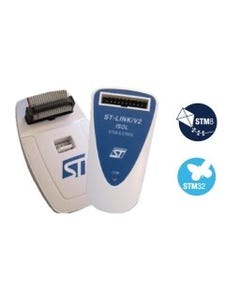📢 $9.99 flat rate shipping in EMEA countries! Ends May 15th - Don't Miss Out!. 🛒 Shop now
NRND
STM8AL3166UCY
Automotive 8-bit ultra-low-power MCU with 32 Kbytes Flash, LIN, RTC, data EEPROM, timers, USARTs, I2C, SPIs, ADC, DAC, COMPs
| Supply Voltage Min Volt | 1.8 |
| Supply Voltage Max Volt | 3.6 |
| Operating Temp Min Celsius | -40.0 |
| Operating Temp Max Celsius | 125.0 |
| ECCN US | EAR99 |
| ECCN EU | NEC |
| Packing Type | Tray |
| RoHs compliant | Ecopack2 |
| Grade | Automotive |
| Package Name | VFQFPN 32 5x5x1.0 mm |
The medium-density STM8AL313x/4x/6x and STM8AL3L4x/6x devices are members of the STM8AL automotive ultra-low-power 8-bit family. The medium-density STM8AL3xxx family operates from 1.8 V to 3.6 V (down to 1.65 V at power down) and is available in the -40 to +85°C and -40 to +125°C temperature...
Read More
|
| Quantity | $ per unit | Savings |
|---|---|---|
| 1-9 | $3.42 | 0% |
| 10-99 | $3.08 | 10% |
| 100-249 | $2.52 | 26% |
| 250-499 | $2.39 | 30% |
| 500-999 | $2.15 | 37% |
| 1000-2939 | $1.83 | 46% |
| 2940-10000 | $1.55 | 55% |
| 10000 + |
Contact sales |
|
| Supply Voltage Min Volt | 1.8 |
| Supply Voltage Max Volt | 3.6 |
| Operating Temp Min Celsius | -40.0 |
| Operating Temp Max Celsius | 125.0 |
| ECCN US | EAR99 |
| ECCN EU | NEC |
| Packing Type | Tray |
| RoHs compliant | Ecopack2 |
| Grade | Automotive |
| Package Name | VFQFPN 32 5x5x1.0 mm |
The medium-density STM8AL313x/4x/6x and STM8AL3L4x/6x devices are members of the STM8AL automotive ultra-low-power 8-bit family. The medium-density STM8AL3xxx family operates from 1.8 V to 3.6 V (down to 1.65 V at power down) and is available in the -40 to +85°C and -40 to +125°C temperature...
Read More
|



